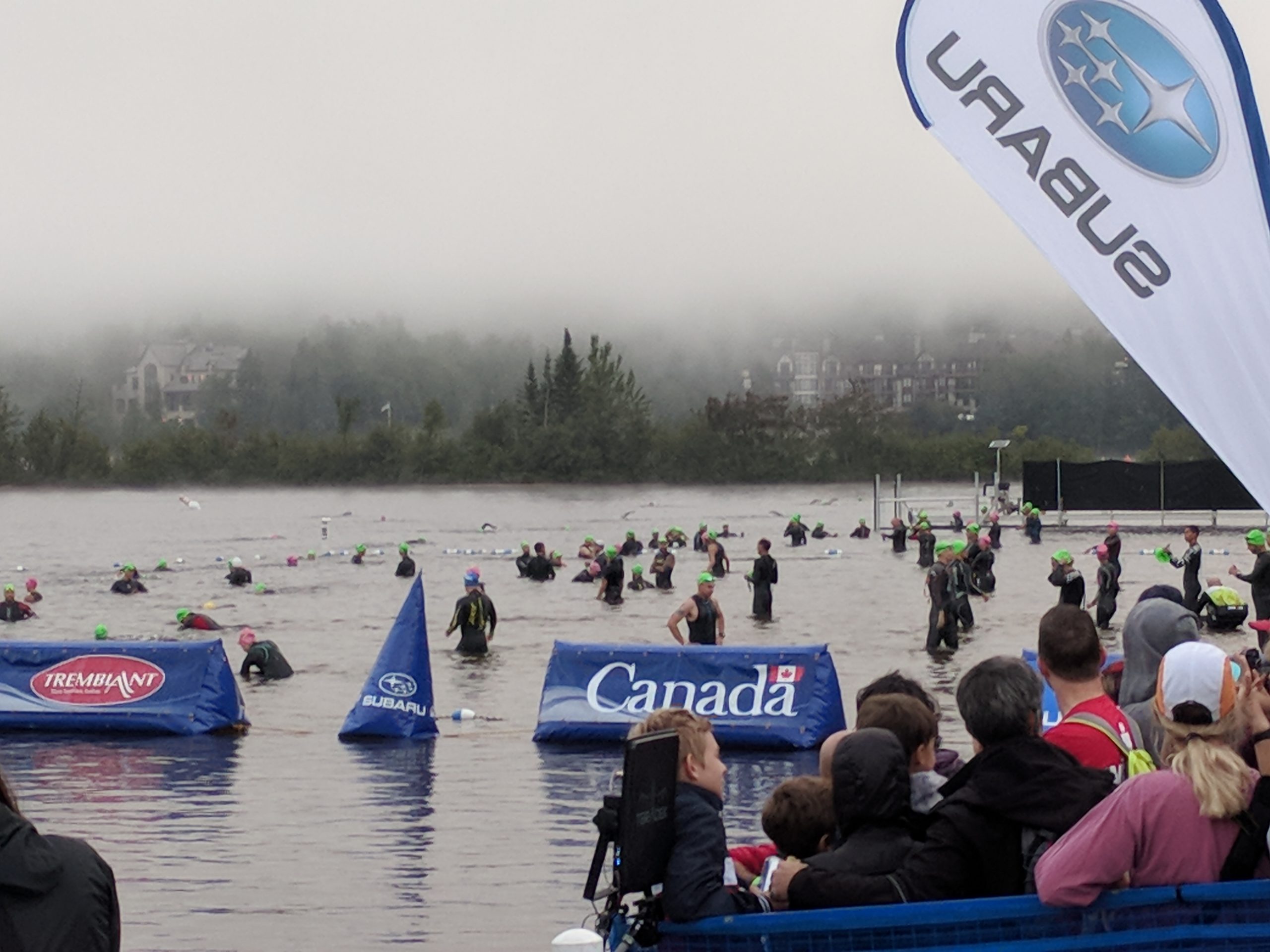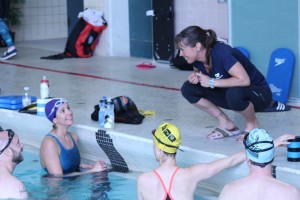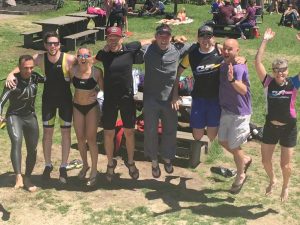Part I – Handling Unknown Water Conditions
- by Coach Nick
There is a lot of excitement that comes with open water swimming but also a lot of fear for some athletes. Is the race a mass start? How choppy is the water? Is there a current? Regardless your competency level with swimming in general we all have the same questions. As you read through this blog post hopefully you can pick out some key points to crush that next swim!
For starters, the trend in triathlons seems to be moving towards rolling starts – non covid related – which consists of a 2-by-2 start (2 people every 2 seconds) or similar. This format is favourable because it saves the “aquaman/ aquawomen” battles of flailing limbs and lack of sight at the start of the race. It allows you to get a proper running start into the water and get the feel for calm water right from the start.
If the swim is a mass start it’s a more intense environment, but there are still a few things you can do to avoid the chaos! Picking your position within the pack at the start of the swim is a great way to prepare a smooth start. You can choose along the sides so all the swimmers are either to your left or right, or you can hold off to the back of the pack and avoid swimmers all together. Both tactics have their advantages such as being able to stick with the pack and find someone’s draft zone for an easier swim or hanging at the back allows you to zone in on your own swim as if you were the only one in the lake. Remember, your chip time does not officially start until you cross that start mat so holding off to the back of the pack will not delay your overall race time.
Great, so we get past the start of the race but damn the water is so choppy, and you are finding it hard to propel yourself forward. All I want you to think about is “high elbow, short reach, brush your knee”. Let’s break that down and explain the benefits of each part.
Keeping a high elbow on your recovery allows for a speedy recovery but also avoids dragging your fingertips along the choppy water and catching your hand early. The short reach is crucial because you want to get you hand back in the water as soon as possible to apply more force. Usually, in calm water, you would want to reach as far forward as you can to maximize the catch phase but in choppy water the extra reach is not statistically significant in altering your speed.
The magic for speed comes in the “brush your knee” phase – the push phase. I describe it as brushing your knee as a visual to explain what a full elbow extension should look like in the water. When swimming, the only way you move forward is by applying force to the water therefore the longer your hand is applying this force the quicker you can move. If the catch is not as effective, then execute more on the push. In this phase picture yourself pushing a box down by your toes and then brushing your thumb against your knee or lower thigh. As you bring your hand out of the water brush your leg then recover with that high elbow. Combining all these together you should get that high elbow recovery, short reach in-front and long push towards your knee – a recipe for choppy open water swimming.
Having an effective swim stroke and all the confidence in the water is great but as swimmers we are always at the mercy of the dreaded current in the water. This will either be your best friend or your worst enemy. For the sake of this blog lets focus on having a current working against you during the swim. When preparing for these swims look at the course beforehand to see what it looks like – out and back, rectangle, or a one way. For an out and back course consider it as a “pay your dues” for the turbo boost the current will offer you during one of the halves. When you are fighting the current try and think streamline… what the mind believes the body achieves. When swimming a rectangle course make a note beforehand on how the current will affect you between buoys. Changing your body position on the water to fight a current on an angle may be advantageous to ensure an overall straight line of sight. On a one-way course, if you have to fight the current just remind yourself that everyone must deal with the same conditions!
As you are approaching your next open water swim session or race keep these points in your mind and see if you notice a change. With anything in training, remember the changes you make so you can reflect on them after the session and see if they were beneficial or not. Any training tips and tricks should be treated like a toolbox, if the tool works for you then great but if not then let’s see if we can find another tool that gets the job done.



